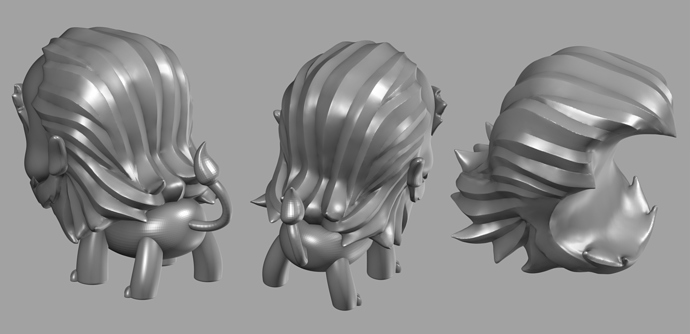I think it is a big advantage of dyntopo to be able to sharply sculpting a part without subdividing the entire mesh.
However, when rubbed with a smooth brush, there is a tendency to leave traces near the boundaries of the different density topologies.

I have marked it with a red grease pencil on the attached photo.
How can I make this place a natural gradient?
Also, I would be grateful if you could give me the correct order or tips for multi-density work.
this is a common problem with all sort of sculpting, its due to bad topology, and its the reason im not a big fan of blenders dynamesh function. the way zbrush does it, it makes a new mesh with only quads, where everything has the same density, and everytime you drag a mask in the viewport, it will calculate a new mesh to replace the old one. that way you have a decent dynamic topology.
the only suggestion i have for you is to keep the density as low as you can.
So, when i want to use Crease or Pinch brush for sharp shapes using dyntopo, is it right way using the brushes on final step after finishing a sculpting for design with same density?
The auto retopo function of the Blender is low quality, so it takes more time to go to multires than Zbrush.
So I think it’s efficient to finish sharp details with dyntopo to save time.
Do I have a right idea?
i would actually use the multi res modifier. box model something close to what you want, and when the model gets too chaotic, do a quick manual retopo and keep going form there.
alternativly, you start in dynamesh, do just the very rough shape, meaning you dont care about those artifacts at all, then do a clean retopo, and multires modifier from there.
Yes, an exemplary method.
Just for now, I envious the dynamesh and zremesher of Zbrush.
These features help making sharp and smooth shape easier.
Also, save a lot of time when creating static assets especially.
Here is a test shot of crease & pinch brushing after sculpting with same density using only dyntopo.
I still need to retopology to go to multires, but I expect this final step give me a base mesh with a little more specific guidance for retopo.

